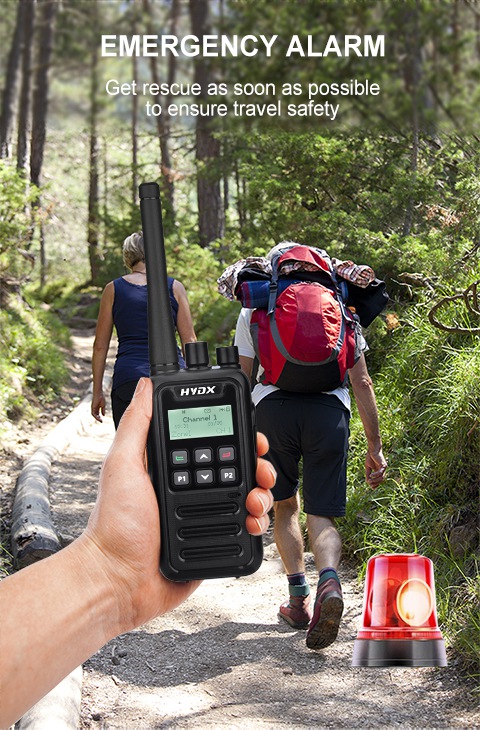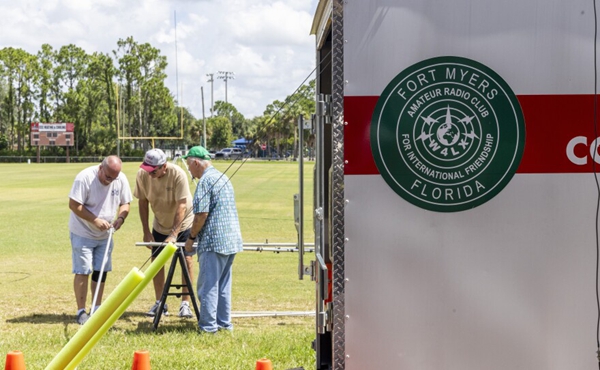Amateur radio operators — "Hams" in the vernacular — are often called upon to use their equipment-both radio and handheld two way radios during difficult times.
Showing those skills recently were members of the Fort Myers Amateur Radio Club Inc. who participated in a national amateur radio Field Day exercise.
John Scharbrough, a member of the Fort Myers Amateur Radio Club and co-chair for the Field Day here, said the event is an annual event sponsored by the American Radio Relay League — ARRL —, which promotes getting out and operating portable planning for emergency preparedness and practicing.
"It's a very social event. Obviously, it's an event to get out in front of the public a little bit with ham radio-including analog walkietalkie and amateur radio dmr since we're setting up in a public place," he said.
The emergency aspects of it are important as well.
"It's an awesome hobby, but it's also a way of being prepared for emergencies," he said. "It's a lot of fun as a hobby. If you're concerned about emergency communications, and want to know best emergency radio,the way to do it is get into it with a hobby. "
Jon Wells, assistant emergency coordinator for the Amateur Radio Emergency Services Group — called ARES — explained what field day does: "It allows us to test ourselves in a portable operation. When we're portable, that means maybe we're helping emergency management or we are helping a service agency like the fire department, police department or something like that because they've had a communications failure."
Leo Windler, of Cape Coral, got involved after he moved here from Indiana. He, too, said the emergency aspect is an important one for him.
"When there's a hurricane, or loss of communication someplace, we can come in and step in," he said. "So that's why I kind of do this."
Windler said there's a ham operator on Sanibel that called in helicopters up to Sanibel for emergencies during Hurricane Ian.
After Ian hit, Windler said he didn't have any cell servers for a week. "But with this, I can still send emails and text messages. We'd actually talk to people," he said.
Since 1933, ham radio operators across North America have established temporary ham radio stations in public locations during Field Day events to showcase the science and skill of amateur radio.
Field Days help to showcase how amateur radio works reliably under any conditions from almost any location to create an independent communications network. These types of operations are especially important for post-hurricane communication.
“Ham radio functions completely independent of the Internet or cell phone infrastructure can interface with laptops or smartphones, and can be set up almost anywhere in minutes. That’s the beauty of amateur radio during a communications outage,” Bob Inderbitzen, national spokesperson for ARRL. “In today’s electronic do-it-yourself environment, ham radio remains one of the best ways for people to learn about electronics, physics, meteorology, and numerous other scientific disciplines, and is a huge asset to any community during disasters or emergencies if the standard communication infrastructure goes down."
Scharbrough said the event has been held nationally for more than 80 years with the Fort Myers club participating for at least 40 of those years.
"It's a learning environment meant for all of us. It's a practice environment. And it's just a fun event," he said.
Local resident Bill Sowell, a retired ER physician, has been involved for about a year, he said.
"I'm learning an incredible amount," he said. "I was actually here last year as a spectator. I said, a year from now I'm going to be here with my own radio, and my own array. And so I'm here."



